Tre Kronor:
Publisher’s Preview
by Mike Bennighof, Ph.D.
January 2024
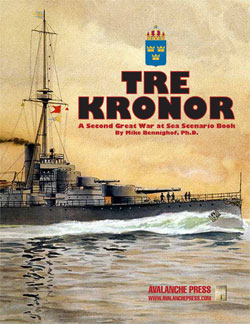 During the real World War II, the Baltic Sea saw small-scale naval action, but its control was never truly in doubt. For most of the war it was an Axis lake, allowing the Germans to train their surface ship and submarine crews there without disturbance and the Swedes to transport iron ore, ball bearings and other goods to German ports. Even in the war’s final days the Kriegsmarine had the ability to support its ground troops with naval gunfire, and only then did Soviet aircraft and submarines threaten German shipping. During the real World War II, the Baltic Sea saw small-scale naval action, but its control was never truly in doubt. For most of the war it was an Axis lake, allowing the Germans to train their surface ship and submarine crews there without disturbance and the Swedes to transport iron ore, ball bearings and other goods to German ports. Even in the war’s final days the Kriegsmarine had the ability to support its ground troops with naval gunfire, and only then did Soviet aircraft and submarines threaten German shipping.
That’s not the case in our counter-factual Second Great War. In this warped reality, Imperial Russia has built a powerful Baltic fleet that’s bottled up in the Gulf of Finland. The Tsar’s Navy is determined to break out into the open sea (well, opener sea – the Baltic is pretty small) and contest what the Germans and Swedes consider their own private commercial and military highway.
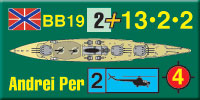 Standing in their way is the small German Baltic Fleet (small relative to the High Seas Fleet) and its allies: chiefly Sweden, but also Finland, Estonia and Latvia. The Russians hold a substantial edge over them, if they can get into the Baltic, but the Germans can at times call on reinforcements from the High Seas Fleet battle squadrons stationed at Wilhelmshaven. Standing in their way is the small German Baltic Fleet (small relative to the High Seas Fleet) and its allies: chiefly Sweden, but also Finland, Estonia and Latvia. The Russians hold a substantial edge over them, if they can get into the Baltic, but the Germans can at times call on reinforcements from the High Seas Fleet battle squadrons stationed at Wilhelmshaven.
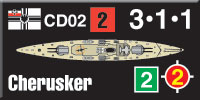 That’s the backdrop of Second Great War at Sea: Tre Kronor. It’s an expansion book for Sea of Iron; you’ll also need The Cruel Sea (for its Russian and German aircraft and minor warships, and some German ships). You get 150 die-cut, silky-smooth playing pieces: 130 double-sized “ship” pieces and 20 just regular-sized ones. And there are forty scenarios, so you can play with them. The story ties in to the broader Second Great War history (which we lay out in a book called The Second Great War). That’s the backdrop of Second Great War at Sea: Tre Kronor. It’s an expansion book for Sea of Iron; you’ll also need The Cruel Sea (for its Russian and German aircraft and minor warships, and some German ships). You get 150 die-cut, silky-smooth playing pieces: 130 double-sized “ship” pieces and 20 just regular-sized ones. And there are forty scenarios, so you can play with them. The story ties in to the broader Second Great War history (which we lay out in a book called The Second Great War).
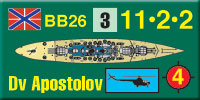 Since all of its large ships have to be included in the book, it’s the Imperial Russian Navy that gets most of the cardboard. Like other Second Great War at Sea books, there’s a direct connection to a Great War at Sea book (The Cruel Sea with Jutland 1919) and we see many of the proposed Russian dreadnought projects described in Jutland: The Baltic Sea re-appear in Tre Kronor in modernized form. Since all of its large ships have to be included in the book, it’s the Imperial Russian Navy that gets most of the cardboard. Like other Second Great War at Sea books, there’s a direct connection to a Great War at Sea book (The Cruel Sea with Jutland 1919) and we see many of the proposed Russian dreadnought projects described in Jutland: The Baltic Sea re-appear in Tre Kronor in modernized form.
 As in our other alternative-history naval books and games, the ships are based on actual proposals wherever possible, or at least on design principles shown by their nation’s naval architects. The new Swedish ships are all actual designs proposed by the Swedish Navy but not funded for construction. The Russians are usually based on Soviet designs, sometimes modified to match Imperial Russian practice. In both realities, the smaller fleets simply purchase what they can from foreign builders. As in our other alternative-history naval books and games, the ships are based on actual proposals wherever possible, or at least on design principles shown by their nation’s naval architects. The new Swedish ships are all actual designs proposed by the Swedish Navy but not funded for construction. The Russians are usually based on Soviet designs, sometimes modified to match Imperial Russian practice. In both realities, the smaller fleets simply purchase what they can from foreign builders.
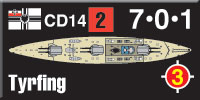 All of the older ships have been modernized for the new war. The five oldest Russian dreadnoughts have been re-constructed as helicopter assault ships, to assist in opening the Gulf of Finland by seizing the Finnish and Estonian shores on either side. Together they can carry a reinforced air assault brigade with the helicopters to move them, and offer heavy gunnery support for the landings. All of the older ships have been modernized for the new war. The five oldest Russian dreadnoughts have been re-constructed as helicopter assault ships, to assist in opening the Gulf of Finland by seizing the Finnish and Estonian shores on either side. Together they can carry a reinforced air assault brigade with the helicopters to move them, and offer heavy gunnery support for the landings.
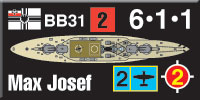 Most of the older battleships shifted to the Pacific Fleet over the course of the 1920’s as the Russian Empire re-asserted itself in the Far East. That leaves the fleet with 13 battleships and two older battle cruisers, as well as two helicopter carriers and four large and modern coast-defense ships plus two older models built just after the First Great War. Supporting them are 22 cruisers, four destroyer leaders and 38 destroyers. In addition, the Russians have two airships floating above to offer support. Most of the older battleships shifted to the Pacific Fleet over the course of the 1920’s as the Russian Empire re-asserted itself in the Far East. That leaves the fleet with 13 battleships and two older battle cruisers, as well as two helicopter carriers and four large and modern coast-defense ships plus two older models built just after the First Great War. Supporting them are 22 cruisers, four destroyer leaders and 38 destroyers. In addition, the Russians have two airships floating above to offer support.
Finland, Estonia and Latvia, having gained independence after the Great War, have built small navies to defend their coastline (Lithuania has has no fleet). They are close German allies and as part of the Central Powers military and economic bloc they rely on Germany for their military equipment and doctrine.
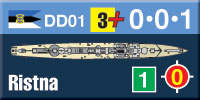 Estonia fields a fleet of a German-built coast-defense ship with a paltry armament of four 280mm (11-inch) guns and two elderly destroyers that formerly served with the High Seas Fleet. The Latvians have two modern German-built destroyers. Finland already has a small fleet in Sea of Iron, and adds a powerful Swedish-built coast-defense ship and four modern destroyers. Estonia fields a fleet of a German-built coast-defense ship with a paltry armament of four 280mm (11-inch) guns and two elderly destroyers that formerly served with the High Seas Fleet. The Latvians have two modern German-built destroyers. Finland already has a small fleet in Sea of Iron, and adds a powerful Swedish-built coast-defense ship and four modern destroyers.
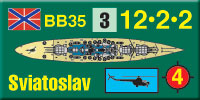 Germany’s Baltic Fleet is a training establishment during peacetime, while the High Seas Fleet drills for war. At the core are six battleships, reconditioned veterans of the First Great War. One is the final unit of the König class, rebuilt like her sisters to operate a large contingent of helicopters as a convoy escort. The others are the five ships of the Prinz Georg class, the only German battleship class armed with 350mm (13.8-inch) guns. Germany’s Baltic Fleet is a training establishment during peacetime, while the High Seas Fleet drills for war. At the core are six battleships, reconditioned veterans of the First Great War. One is the final unit of the König class, rebuilt like her sisters to operate a large contingent of helicopters as a convoy escort. The others are the five ships of the Prinz Georg class, the only German battleship class armed with 350mm (13.8-inch) guns.
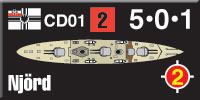 The Germans also add nine coast-defense ships to their order of battle: one older ship begun before the First Great War and only completed decades later. Four small ships armed with four 305mm (12-inch) guns each, and four large and modern ships sporting six 380mm (15-inch) guns and better classed as small, slow battleships. The Germans also add nine coast-defense ships to their order of battle: one older ship begun before the First Great War and only completed decades later. Four small ships armed with four 305mm (12-inch) guns each, and four large and modern ships sporting six 380mm (15-inch) guns and better classed as small, slow battleships.
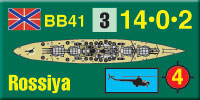 Sweden has a mid-sized fleet in Sea of Iron, and carries over its more modern ships to the Tre Kronor story. In the new book she receives the six cruisers planned during the First World War (three light cruisers and three armored cruisers), suitably modernized for a new generation’s war. Three new light cruisers proposed during the 1930’s are present, and two more units of the Gotland class, altered to operate helicopters rather than seaplanes. Sweden has a mid-sized fleet in Sea of Iron, and carries over its more modern ships to the Tre Kronor story. In the new book she receives the six cruisers planned during the First World War (three light cruisers and three armored cruisers), suitably modernized for a new generation’s war. Three new light cruisers proposed during the 1930’s are present, and two more units of the Gotland class, altered to operate helicopters rather than seaplanes.
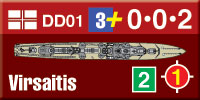 The Swedes also have two examples of the proposed 1939 coast-defense ships, and two examples of the proposed coast-defense monitor armed with a pair of 380mm (15-inch) guns. Like the three Baltic powers, the Swedes also get a handful of additional aircraft suitable to the technology level of the Second Great War (biplanes, basically). The Swedes also have two examples of the proposed 1939 coast-defense ships, and two examples of the proposed coast-defense monitor armed with a pair of 380mm (15-inch) guns. Like the three Baltic powers, the Swedes also get a handful of additional aircraft suitable to the technology level of the Second Great War (biplanes, basically).
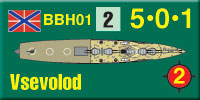 The story picks up in August 1940, with the initial Russian attacks on the Central Powers. The scenarios follow the same story-telling format we’ve been using for a while with both the alternative-history books and the main-line historical games like Bismarck. The story unfolds through the scenarios, and it’s a story of pretty high-intensity naval warfare. Once the Russian punch their way through the minefields and coastal-artillery free-fire zones clogging the mouth of the Gulf of Finland, they face the combined German-Swedish fleets in the central Baltic Sea. Only rarely can the Central Powers count on reinforcements from the High Seas Fleet, but the Russians can never be sure when overwhelming force might make its way through the Kaiser Wilhelm Canal to Kiel. The story picks up in August 1940, with the initial Russian attacks on the Central Powers. The scenarios follow the same story-telling format we’ve been using for a while with both the alternative-history books and the main-line historical games like Bismarck. The story unfolds through the scenarios, and it’s a story of pretty high-intensity naval warfare. Once the Russian punch their way through the minefields and coastal-artillery free-fire zones clogging the mouth of the Gulf of Finland, they face the combined German-Swedish fleets in the central Baltic Sea. Only rarely can the Central Powers count on reinforcements from the High Seas Fleet, but the Russians can never be sure when overwhelming force might make its way through the Kaiser Wilhelm Canal to Kiel.
 The Baltic Sea is small, and when you cram lots of ships into it, there’s going to be battle. Lots of battle. Tre Kronor extends the Second Great War story, and it makes sure you can fight with your battleships. That’s a pretty good combination. The Baltic Sea is small, and when you cram lots of ships into it, there’s going to be battle. Lots of battle. Tre Kronor extends the Second Great War story, and it makes sure you can fight with your battleships. That’s a pretty good combination.
Click here to join the Gold Club.
See your Gold Club Insider newsletter for ordering information.
Sign up for our newsletter right here. Your info will never be sold or transferred; we'll just use it to update you on new games and new offers.
Mike Bennighof is president of Avalanche Press and holds a doctorate in history from Emory University. A Fulbright Scholar and NASA Journalist in Space finalist, he has published a great many books, games and articles on historical subjects; people are saying that some of them are actually good.
He lives in Birmingham, Alabama with his wife, three children, and his new puppy. His Iron Dog, Leopold, was a good dog.
Want to keep Daily Content free of third-party ads? You can send us some love (and cash) through this link right here.
|
